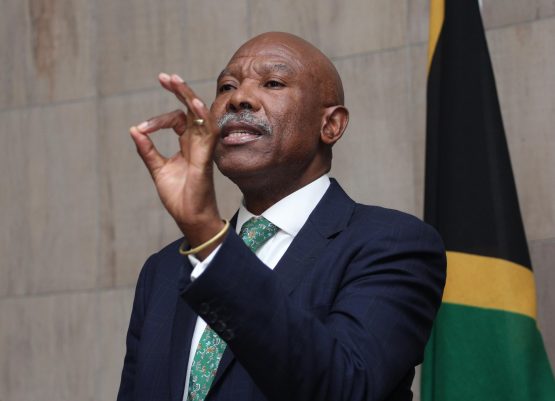Sarb hikes repo rate by 50bps

The South African Reserve Bank (Sarb) hiked the repo rate by 50 basis points (bps) on Thursday, the steepest increase since 2016.
Spiking global inflation fuelled the move, which takes the bank’s key rate to 4.75% and the prime lending rate of commercial banks to 8.25%.
Sarb Governor Lesetja Kganyago announced the rate hike on Thursday, following the conclusion of the bank’s May Monetary Policy Committee (MPC) meeting. The hike was expected by a slight majority of economists ahead of the meeting, especially after the US hiked its key rate by the same margin last month.
He said four members of the MPC voted for a 50bps hike, while one member voted for an increase of 25bps.
The central bank’s forecast for headline inflation has been revised higher to 5.9% for 2022, due to higher fuel and food prices.
“The risks to the inflation outlook are assessed to the upside. Global producer price and food price inflation continued to surprise higher in recent months and may do so again,” said Kganyago.
“Russia’s war in the Ukraine is likely to persist for the rest of this year and may have significant further effects on global prices. Oil prices increased strongly from the start of the war and may rise more as stresses in energy markets intensify,” he warned.
Kganyago said the bank’s GPD forecast for 2022 has been revised down to 1.7%, from the 2% forecast cited in March following the last MPC meeting.
The governor listed short-term negative impacts of the KwaZulu-Natal floods in April and ongoing energy supply issues (load shedding) as contributing factors to the downward revision in the Sarb’s GDP forecast.
Meanwhile, Kganyago conceded that headline inflation is expected to breach the target range (Sarb’s 3% to 6%) in the second quarter of this year.
He noted that, in the near-term, headline inflation “has increased well above the mid-point of the inflation target band”.
“Against this backdrop, the MPC decided to increase the repurchase rate by 50bps to 4.75% per year, with effect from the 20 of May 2022,” he said.
“Current repurchase rate levels reflect an accommodative policy stance through the forecast period, keeping financial conditions supportive of credit demand as the economy continues to recover,” he added.
Despite the 50bps hike, Kganyago reiterated that the implied policy rate path of the Sarb’s Quarterly Projection Model still indicates a “gradual normalisation” through to 2024 “given the inflation forecast”.
Commenting on the repo rate decision, Pam Golding Property Group CEO Dr Andrew Golding, said while he hoped for a lower 25bps increase, the 50bps hike comes amidst “resurgent inflation” globally.
“In the wake of the [US] Fed’s recent 50bps interest rate hike and the rapid normalisation of monetary policy globally, together with rising oil prices and renewed weakness in the rand, it seemed inevitable that this would be the fourth consecutive MPC meeting at which an interest rate hike would be announced,” he noted.
Home loan and residential property impact
Golding said that the impact on SA’s residential housing market is not expected to be significant, especially as this is still the lowest level of prime interest rates in more than two decades (prime was 8.5% between July 2012 and December 2013).
“It is too early to forecast if the gradual upward repo rate cycle will have any significant impact on [residential property] market activity.”
FNB commercial property economist John Loos, however, warns that the commercial market is likely to feel the impact.
“A more significant 50bps hike, after three 25bps worth of rate hikes at prior meetings, leads us to expect that we may see some renewed slowdown in sales activity in the commercial property sector in the second half of 2022,” he said.
“We also expect this ongoing rate hiking to keep average commercial property capital value growth at low single digits, translating into negative growth in real [inflation-adjusted] terms,” he said.

